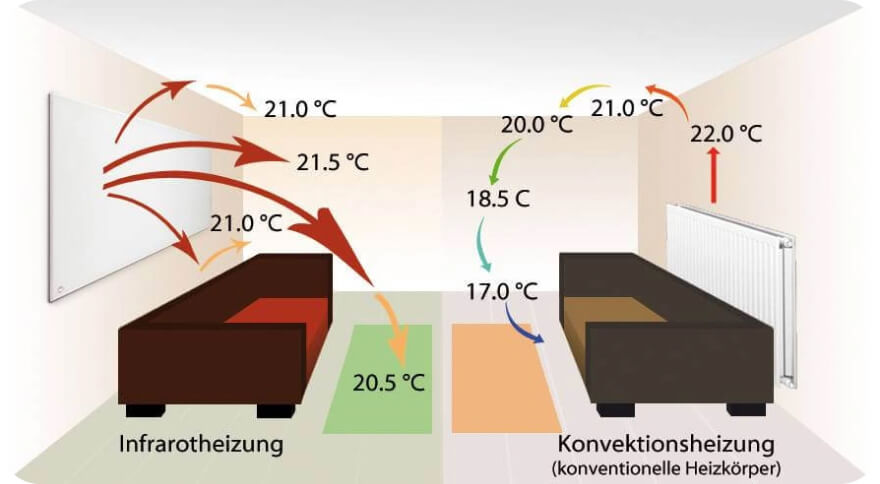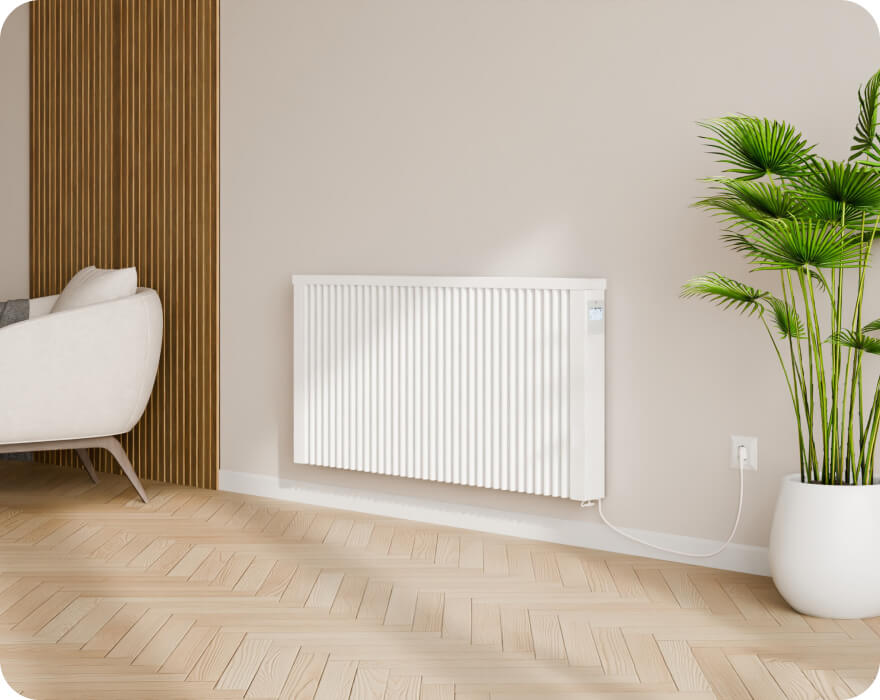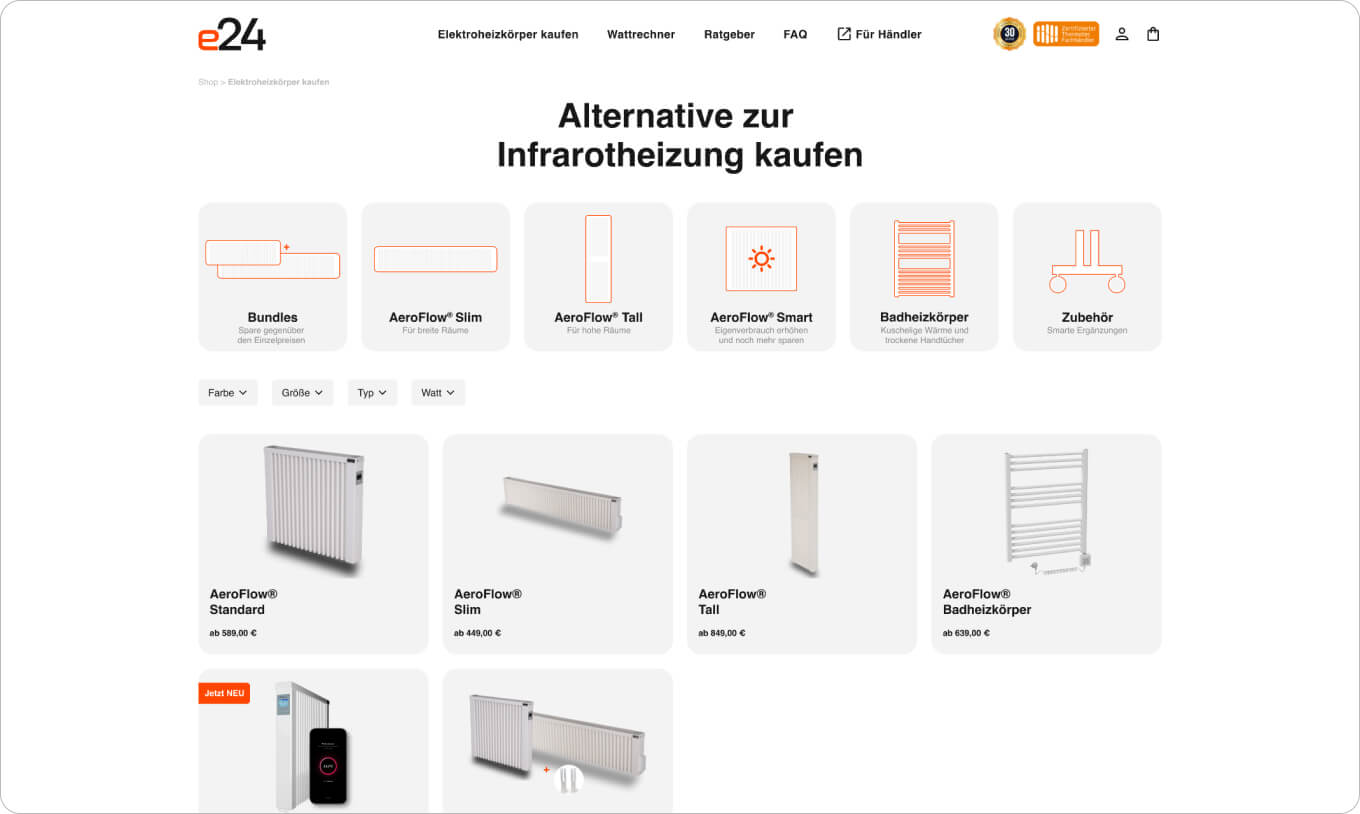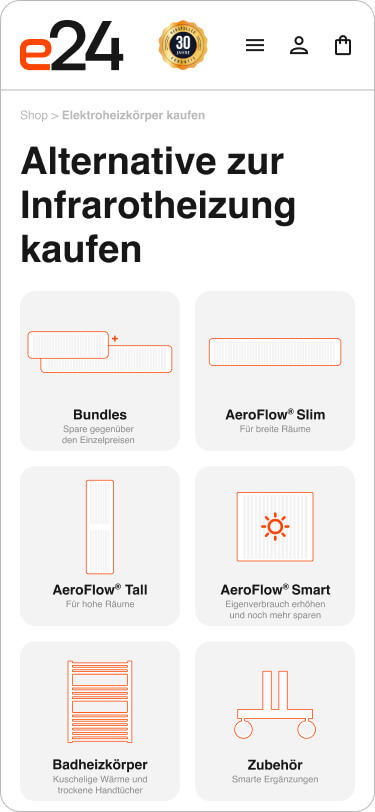Infrared heating:
What are the differences to an electric radiator?


How does an infrared heater work?
Infrared heaters utilise the principle of infrared radiation to generate heat. In contrast to conventional heating systems, which heat the air in the room, infrared heaters heat objects and surfaces in the room directly, similar to the sun. An electrical conductor converts the electrical energy into infrared radiation, which is then absorbed by the surrounding surfaces and heats them. These heated surfaces then slowly release the heat into the room, resulting in a pleasant and even heat distribution.

Buy infrared heating alternative
If you are interested in buying an infrared heater, you should also look at alternatives. Electric heaters, such as surface storage heaters or modern convectors, also offer efficient heating solutions and can be a good alternative depending on your requirements and room structure. While infrared heaters emit heat directly onto surfaces, other electric heaters distribute the heat evenly through the air. Pay attention to energy consumption, installation requirements and costs to find the most suitable heating solution for your needs. Compare different models and, if necessary, seek expert advice to make an informed decision.

Advantages and disadvantages of infrared heaters
Infrared heaters offer a variety of benefits. They heat the surfaces in the room efficiently, resulting in a pleasant and even heat distribution. They are also easy to install and do not require extensive maintenance. In addition, they can be operated in an energy-saving manner because they react quickly and can be used in a targeted manner. However, there are also some disadvantages to consider. Infrared heaters generally have higher purchase costs compared to conventional heating systems. In addition, they cannot necessarily heat the entire room evenly, as the heat output depends on the positioning of the heater and the absorption of radiation by objects. In addition, heat transfer can be impaired by thick carpets or curtains. Discover all the advantages and disadvantages now: Infrared heaters: Everything about the advantages and disadvantages as well as possible alternatives

Infrared heating vs electric heating -
What is the difference?
Infrared heaters heat objects and people in the room directly, whereas electric heaters heat the air. With infrared heaters, this leads to a more localised, faster heat emission, while electric heaters ensure even heat distribution. Electric heaters are often cheaper to buy and, thanks to modern technologies, offer an efficient and flexible heating solution that can be adapted to different room sizes and requirements.

Is it worth buying an infrared heater?
Buying an infrared heater offers advantages such as targeted heat output and easy installation. However, the higher purchase costs and limited even heat distribution should also be considered. The efficiency of an infrared heater depends heavily on the correct placement and the specific room conditions. For many users, it may therefore make sense to carefully consider their individual heating requirements and the specific advantages and disadvantages of infrared heating before making a decision.
What our customers say about us
Which electric radiator do I need for my home?
Follow the guide to choosing the perfect electric radiator for your home! Are you looking for an efficient and customised solution to optimise your indoor climate? Then you've come to the right place. Our innovative guide will lead you through a simple but precise decision-making process to find the ideal type of electric radiator for your needs. From size and performance to the individual requirements of your living space - let's explore the path to your perfect heating system together!
Wattage calculator
 0€ shipping in DE
0€ shipping in DE +49 341 9899120
+49 341 9899120



